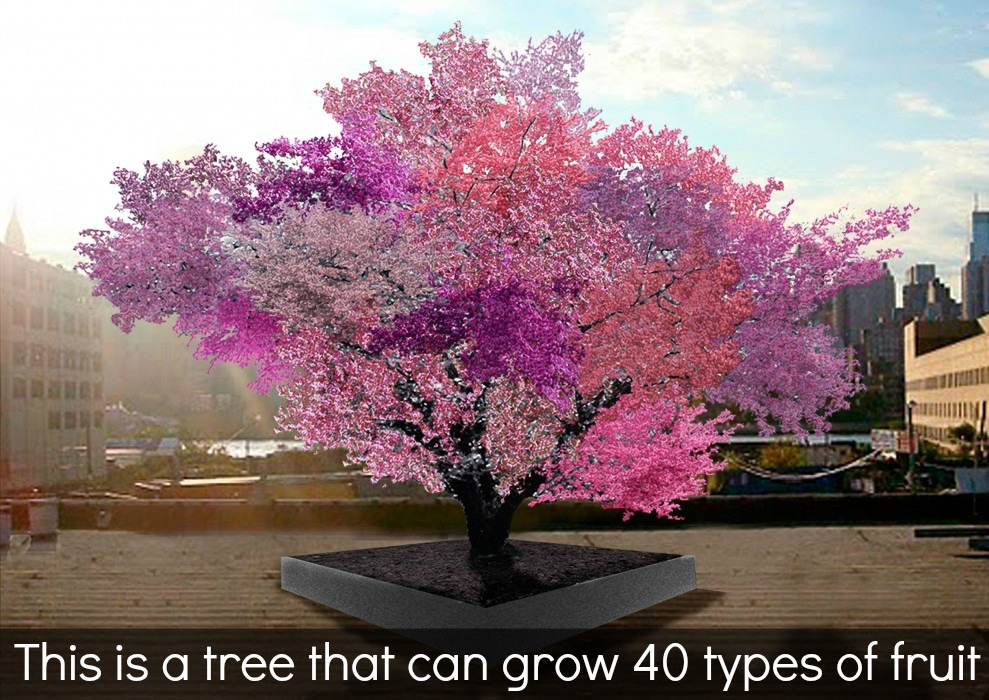

This tree is a little peculiar to look at. It’s because this isn’t an ordinary tree, one might argue that it’s actually closer to 40 trees all wrapped up into one. Indeed, when this tree is in full bloom (as shown in the picture), you can find about 40 different types of fruit on its branches, from peaches to plumbs, apricots to nectarines, treats like cherries and even nuts such as almonds. I could make a rather delicious fruit salad by stopping at this single tree.
How is this possible? Science.
More specifically, through the work of Van Aken, who is an art professor at Syracuse University. He used a process, called grafting, to allow different varieties of trees to grow as a single tree – the way I understand it, this process isn’t unlike skin graphting or other techniques.
This started when Aken learned that the New York State Agricultural Experiment Station was under funded and, as a result, scheduled to be shut down. Some of the trees in this station were very rare, perhaps even some of the last of their kind. Aken bought the orchard and began working on a method to grapht some of these trees together.

From here, Aken needed to plant a working tree. This tree is the “real” tree, or the foundation. It will provide the root structure and the frame on which Aken could grapht other branches. Aken created a plan so all of the parts of the tree would blossom around the same time as one another, then got to work on creating his Tree of 40 Fruit through a process called chip graphting.
This is accomplished when you make an incision into the working tree, then taping a sliver of a fruit tree (one with a bud) into the incision and allowing it to heal over a winter. Then, you prune the new-branch and hopefully it’ll start growing as part of the worker tree.
This tree only has “stone fruits,” or more appropriately known as drupe. A stone fruit is basically any fruit where the seed is contained inside a pit (like a peach). There are far more stone fruits than are available at the supermarket, this tree is helping to preserve some of that diversity.
Currently, Aken has created 16 of these trees. They exist is museums and private collections. One might ask, what happens to all of the fruit? Aken commented on that very question, “I’ve been told by people that have [a tree] at their home that it provides the perfect amount and perfect variety of fruit. So rather than having one variety that produces more than you know what to do with, it provides good amounts of each of the 40 varieties. Since all of these fruit ripen at different times, from July through October, you also aren’t inundated.”
You can see Aken talking about his Tree of 40 Fruit below.
